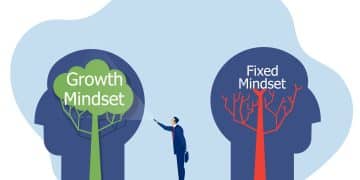How to make a career transition: The Ultimate Guide to Changing Careers When You Don’t Know Where to Start

Do you have questions about how to make a career transition? There are some simple processes that can help you!
Understanding when your career no longer aligns with your goals and values is the first step in recognizing the need for change.
Whether you’re feeling stuck, unfulfilled, or simply ready for something new, this ultimate guide on how to make a career transition is here to help.
From gaining clarity on your goals to navigating the job market with confidence, we’ll walk you through practical steps to start fresh and build a career you truly love—even if you don’t know where to begin.
Differentiating a Temporary Job Slump from Career Misalignment
Everyone experiences occasional slumps in their career. It’s essential to distinguish between a temporary dip in motivation and a genuine misalignment with your career path:
- Temporary Job Slump: Occurs due to short-term stressors such as a specific project or deadline, which can be resolved with rest, support, and time.
- Career Misalignment: Involves a deep-seated, ongoing disconnect with the nature of your work, tasks, and industry. This feeling tends to persist regardless of external factors.
Ask yourself if the dissatisfaction is tied to a specific situation or if it’s a recurring theme in your professional life. If it’s the latter, it might be time to consider a career change.
Overcoming Fear and Uncertainty
The thought of making a major career transition can be daunting. Overcoming this fear involves several strategies:
Deeply understand your motivations for change. Reflect on your core values, interests, and how they align with potential new career paths.
Learn about the new industry or role you’re considering. This reduces uncertainty and builds confidence in your decision-making process.
Surround yourself with supportive friends, mentors, or career coaches who can provide guidance, encouragement, and potential leads.
Transitioning careers can be a transformative journey of self-discovery and growth. It’s essential to recognize the signs early and take proactive steps forward.
Self-Discovery: Understanding Your Career DNA

Embarking on a career change begins with understanding your career DNA. It’s about uncovering what makes you unique and how your innate characteristics can guide you to a more fulfilling career path.
Laura Sheehan talks about her experiences in finding herself looking for a new career path and the challenges of reinventing herself in a new environment.
Career Change: The Questions You Need to Ask Yourself Now | Laura Sheehan | TEDxHanoi
Identifying Core Values and Interests
Start by identifying what matters most to you. Consider asking yourself these questions:
- What activities or causes bring you fulfillment?
- Which personal values are non-negotiable in your professional life?
- What topics or tasks do you naturally gravitate towards?
Spend time journaling your responses. Consult past experiences for patterns that reveal your core values and deepest interests.
Recognizing these elements is essential, as they are the foundation for career satisfaction and drive.
Mapping Your Talents and Experiences
Next, take stock of your natural talents and prior experiences. Create a detailed list of skills you’ve gained across different job roles, volunteer work, and hobbies.
These could include skills like leadership, problem-solving, or creativity.
Match these skills to potential career paths. Consider how your experiences can apply in various contexts.
For example, skills learned in project management are valuable in numerous industries from technology to education.
Discovering What Motivates and Energizes You
Reflect on past moments when work felt invigorating. Was it the task itself, the team environment, or a specific role you played? Identifying these moments can help you pinpoint what truly motivates you.
You can also try experimenting with new hobbies or projects to see what excites you. Volunteer, take up courses, or start small side projects that align with your interests.
These experiences can provide insights into the types of work that keep you energized and engaged.
By deeply understanding these aspects of your career DNA, you create a solid foundation to explore new career avenues confidently.
This understanding sets the stage for thinking outside conventional paths, opening up a world of possibilities beyond traditional career norms.
How to make a career transition: Breaking Free from Conventional Career Rules
Traditional career paths often follow a linear progression: starting with an entry-level position, moving up the ranks, and ultimately reaching a peak role in the same industry.
While this pathway provides stability and predictability, it can also stifle creativity and limit opportunities for true fulfillment.
Sticking to a conventional career path might lead to:
- Monotony: Doing similar tasks repeatedly can lead to boredom and stagnation.
- Limited Growth: Following a set path restricts the development of new skills and interests.
- Misalignment with Personal Values: Your personal values and aspirations might evolve, but a rigid career path may not accommodate these changes.
- Burnout: The pressure to conform to expected career milestones can result in stress and burnout.
The Benefits of Creating an Unconventional Career Journey
Embracing an unconventional career journey opens up a world of possibilities.
You can explore diverse roles and industries, paving the way for varied experiences.
Stepping off the beaten path often requires innovative thinking and problem-solving, fostering creativity.
You have the freedom to choose paths that resonate more with your evolving interests and values.
Unconventional paths can be more challenging, leading to robust personal and professional development.
Strategies for Thinking Outside the Traditional Career Box
Pursuing an unconventional career path requires courage and openness to change. The next step involves identifying your transferable skills and leveraging them to build a bridge to a new industry.
Building Your Bridge to a New Industry

As you ponder how to make a career transition, identifying transferable skills is crucial. These are abilities you possess that are applicable across various industries.
Start by reflecting on your current job role. Which tasks do you excel at that require skills like leadership, communication, problem-solving, or project management?
Consider soft skills as well, such as adaptability or time management, which are universally valued.
Additionally, seek feedback from peers or mentors to uncover strengths you might overlook.
This holistic view will boost your confidence in transitioning to a new field, ensuring you highlight relevant strengths in applications and interviews.
Gaining Relevant Experience
Gaining experience in a new industry need not disrupt your current position. Leverage volunteer opportunities, short courses, or part-time roles related to your target field.
Online platforms offer freelance or gig opportunities, allowing you to test the waters with minimal commitment.
Engage in projects that integrate your current expertise with new industry practices.
For instance, if pivoting from marketing to tech, consider managing a digital transformation project at your current workplace, combining marketing strategies with technological innovations.
Leveraging Informational Interviews and Networking
Informational interviews are goldmines for insider information about industries you’re interested in. They provide perspectives on industry demands, company cultures, and potential roles.
To maximize these interactions, research thoroughly beforehand. Prepare insightful questions that reveal more about the field and how it aligns with your skills and interests.
Networking events, both online and offline, can also open doors. Platforms like Linkedln offer groups and forums dedicated to industry-specific discussions where you can connect with professionals eager to share advice.
By blending these strategies, you’ll establish a strong bridge to your new industry, setting the stage for a successful transition.
Balancing exploration with your current commitments requires effort but yields insightful discoveries, paving the way forward.
Overcoming the Experience Gap
Facing an experience gap when transitioning to a new career can be hard, but it’s doable.
You can bridge this gap by creatively building industry-specific experience and positioning your existing skills to fit the new field. Here’s how you can address these challenges effectively.
Creative Ways to Build Industry-Specific Experience from Scratch
Starting from scratch in a new industry often requires innovative strategies to gain relevant experience.
Platforms like Coursera, Udemy, and Linked-In Learning offer courses and certifications that can provide essential knowledge and credentials in your target industry.
Take on freelance projects or short-term internships to quickly build a portfolio. Websites like Upwork and Fiverr can connect you with opportunities to gain practical experience.
Volunteering for relevant organizations can provide hands-on experience while also expanding your network. Look for opportunities that align with your target career’s skills and responsibilities.
Initiate personal projects that showcase your skills. Whether it’s starting a blog, developing an app, or managing an event, these projects can highlight your capabilities effectively.
Positioning Your Existing Skills and Experiences for a New Field
If you want to know how to make a career transition, it’s vital to present your current skills and experiences in a way that aligns with the new field’s demands.
Identify and emphasize skills that are valuable across different industries, such as communication, project management, and problem-solving.
Tailor your resume and cover letter to showcase how these skills benefit the new role.
Contextualize your past experiences to align with industry-specific requirements.
For example, if you managed a team in your previous job, emphasize your leadership and team-building skills as they relate to the new role.
Update your Linked-In profile and other professional platforms to reflect your career change.
Use industry-specific keywords and connect with professionals in your target field to increase visibility and opportunities.
Strategies for Addressing the ‘No Experience’ Challenge in Interviews
Interviewing for a role in a new industry without prior experience can be nerve-wracking. Here’s how to navigate these interviews confidently:
- Prepare Compelling Stories
Craft stories that illustrate your transferable skills and relevant experiences. Focus on scenarios where you demonstrated the skills needed for the new role. - Show Enthusiasm for Learning
Emphasize your willingness and ability to learn quickly. Highlight any recent courses or self-study efforts that demonstrate your commitment to acquiring industry knowledge. - Leverage Informational Interviews
Informational interviews can provide insights into the industry and help you understand what employers are looking for. Use this information to tailor your responses and demonstrate industry knowledge.
These strategies will help you address the experience gap and position yourself as a strong candidate for the new career path. Transition to your target industry with confidence and a clear plan to leverage your abilities effectively.
Creating Your Career Transition Action Plan
Embarking on a career transition requires a structured approach to ensure success without jeopardizing your financial stability.
A well-crafted action plan acts as your guide through this transformative journey, breaking down the process into manageable steps.
Developing a Realistic Timeline
Creating a timeline is essential on how to make a career transition. It helps you set realistic goals and stay on track during the process.
Begin by identifying key milestones such as researching new industries, gaining relevant skills, and starting a job search.
Allocate time for each milestone based on your current commitments and resources. Keep in mind that flexibility is critical; career transitions may be subject to unforeseen challenges.
Setting Specific, Achievable Milestones
After establishing a timeline, break down each step into smaller, actionable tasks. Consider milestones like:
- Completing an online course or certification to enhance your skills.
- Updating your resume to highlight transferable skills.
- Attending networking events to connect with professionals in your desired field.
- Applying for a set number of jobs within a specific timeframe.
Celebrate each achievement, no matter how small, to maintain motivation and momentum.
Balancing Financial Stability with Career Exploration
Financial stability is a primary concern when making a career change. To manage this, create a budget that accounts for potential income fluctuations. Consider:
- Building an emergency fund to cover expenses during the transition.
- Exploring part-time or freelance work that aligns with your new career path, blending exploration with financial security.
- Assessing any benefits or severance packages if leaving a current position.
While financial health is vital, remember that the ultimate goal is to find a fulfilling career path.
Your action plan should harmonize the necessity of financial security with passionate exploration.
As you embark on this journey, start by framing these initial steps with care and intention, knowing each deliberate action propels you closer to your ultimate career goal.
Making the Leap: Executing Your Career Change

Embarking on a career change is a significant step that requires strategic planning and diligent execution.
This phase is about transforming your well-laid plans into a tangible reality, confronting the challenges of diving into a new field, and nurturing sustained momentum.
Practical Steps for Making Your Career Transition a Reality
Creating a detailed plan is essential on how to make a career transition. Start by outlining your ultimate career goals and breaking them into smaller, achievable steps.
This might include updating your resume and portfolio to emphasize relevant skills and accomplishments.
Consider enrolling in courses or workshops that can enhance your industry-specific knowledge. Keep an eye on job openings and tailor your applications to highlight your strengths.
Networking remains a powerful tool. Attend industry events and engage with professionals in your target field.
Leverage platforms like LinkedIn to connect with industry leaders and peers who might provide valuable insights or mentorship opportunities.
Navigating the Challenges of Starting Over in a New Field
Switching careers often means starting over, which can feel intimidating. You might encounter skepticism about your lack of specific experience.
Combat this by showcasing your transferable skills and demonstrating your eagerness to learn.
Prepare to address why you’re making the change during interviews, highlighting genuine interest and readiness for challenges ahead.
Consider temporary or part-time roles in your new industry to build experience while maintaining financial stability.
Volunteering or freelancing can also provide hands-on experience and fill any gaps in your resume.
Maintaining Momentum and Motivation During the Transition Period
Persistence and positivity are vital during a career transition. Set short-term goals to track progress and celebrate small victories to maintain motivation.
Joining support groups or forums with others undergoing similar changes can provide encouragement and practical advice.
Embrace a growth mindset. Viewing challenges as opportunities to learn and grow can keep you motivated. Regularly reassess your strategy, adapt to new insights, and stay flexible in your approach.
Moving forward, explore ways to solidify your footing in this new professional landscape, continuously build your expertise, and adapt strategies to sustain long-term success.
Do you understand how to make a career transition? Take advantage of the tips above to start your new journey.
Continue to visit our website for more content like this!





